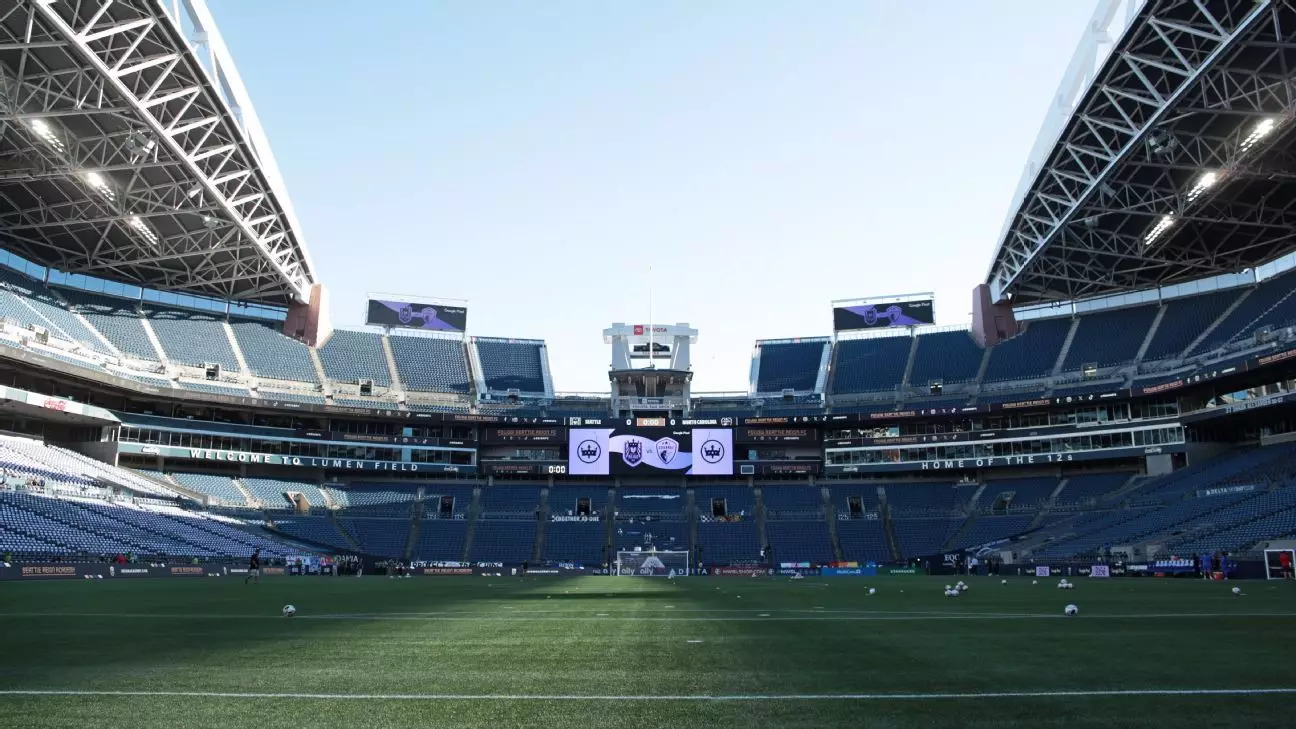As the National Women’s Soccer League (NWSL) prepares to navigate through the tumultuous waters of the upcoming FIFA Men’s World Cup, one thing stands clear: they are not bowing out gracefully. Commissioner Jessica Berman’s recent remarks indicate a strategic intention to maintain league operations during the World Cup, which will unfold in the summer of 2026 across North America. Despite the World Cup’s logistical challenges, the NWSL aims to solidify its presence in a soccer landscape dominated by the men’s game, a move indicative of growing ambition and resilience within women’s sports.
In stark contrast to Major League Soccer, which has opted to suspend play to accommodate national team commitments, Berman’s vision for the NWSL remains deliberately defiant, proclaiming, “I do not expect us to shut down for the full period of the Men’s World Cup.” This determination to keep matches running suggests not only confidence but also a commitment to providing fans with high-caliber soccer, regardless of the overshadowing spectacle of the men’s tournament. The league’s leadership seems poised to capitalize on the heightened interest in soccer during the World Cup, confident that their unique brand of athleticism and competition can thrive even in the most challenging circumstances.
Navigating Logistics and Disruptions
However, while the intent may be bold, executing this plan poses significant logistical challenges. As highlighted in Berman’s discussions, the full extent of the league’s strategy is still under consideration, and the details remain nebulous. The NWSL must address various issues, such as venue accessibility and operational continuity, especially for clubs based in World Cup host cities. Four teams—Houston Dash, Kansas City Current, Racing Louisville FC, and Utah Royals FC—face the prospect of losing their regular training facilities as they become official base camps for World Cup teams. This disruption underscores the complex nature of scheduling in a league that already grapples with the adverse effects of summer tournaments and international breaks.
The exclusive-use requirements imposed by FIFA mean that these teams may be left stranded for a considerable period, roughly two months, without their typical training grounds. Their need to find alternative venues not only complicates logistics but also impacts team morale and operational consistency. Such challenges expose the vulnerability of even established leagues, and the NWSL must rise to the occasion to minimize disruption for its players and staff.
Past Experiences and Lessons Learned
The NWSL’s experience during past global tournaments, such as the Olympics and regional championships, should offer valuable lessons as they craft their mid-2026 strategy. Last year, the league attempted to create a crossover competition with Liga MX Femenil, ultimately leading to its cancellation due to tepid interest and engagement. The NWSL’s decision to pause play in July to allow for individual friendly matches during national tournaments reveals a readiness to adapt but also points to previous missteps they must learn from. In this regard, their communication strategy will be crucial.
Fan engagement and viewership stand to be directly impacted during this unique overlap with the Men’s World Cup. Without careful planning and innovative marketing, the NWSL risks alienating its burgeoning fanbase, which has steadily developed over recent years. Berman and her team must ensure that they not only navigate this challenging phase but also find ways to amplify the visibility of women’s soccer in the thick of a male-dominated spectacle. Creating events that celebrate NWSL teams and highlight their skill on national and international platforms may be pivotal in attracting viewers during this peak soccer season.
The Future Beyond the Tournament
As the league looks towards the 2026 World Cup, they must also consider the longer-term trajectory of women’s soccer in the United States. The announcement that the U.S. is the sole bidder for the 2031 Women’s World Cup signifies a seismic shift in how women’s soccer is perceived and supported at institutional levels. U.S. Soccer’s commitment to expand the Women’s World Cup to 48 teams in the future aligns with a broader movement towards equity and recognition for women’s sports.
Amid these transformative changes, the NWSL stands at a critical crossroads, balancing the necessity of immediate operational decisions with the realization that its success is intertwined with the broader narrative of women’s soccer. The events of the next few years will shape the league’s identity and impact its players, and it is essential for the NWSL to leverage this explosive growth in soccer popularity, both at home and abroad. In these challenging times, the league’s defiance of norms and unwillingness to shrink back in the face of adversity might not only preserve its presence but could also pave the way for future triumphs on and off the pitch.

